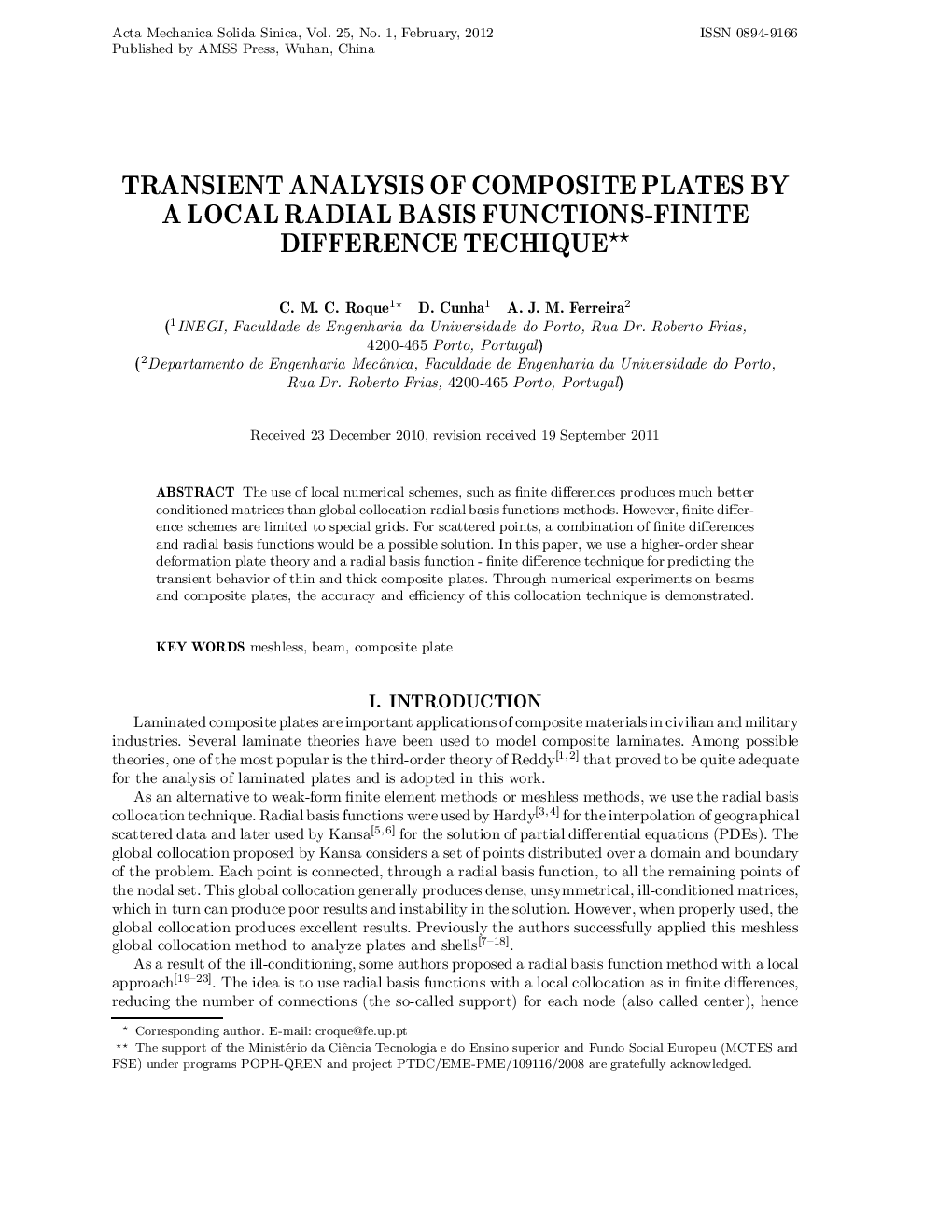| Article ID | Journal | Published Year | Pages | File Type |
|---|---|---|---|---|
| 752650 | Acta Mechanica Solida Sinica | 2012 | 15 Pages |
Abstract
The use of local numerical schemes, such as finite differences produces much better conditioned matrices than global collocation radial basis functions methods. However, finite difference schemes are limited to special grids. For scattered points, a combination of finite differences and radial basis functions would be a possible solution. In this paper, we use a higher-order shear deformation plate theory and a radial basis function – finite difference technique for predicting the transient behavior of thin and thick composite plates. Through numerical experiments on beams and composite plates, the accuracy and efficiency of this collocation technique is demonstrated.
Related Topics
Physical Sciences and Engineering
Engineering
Mechanical Engineering
